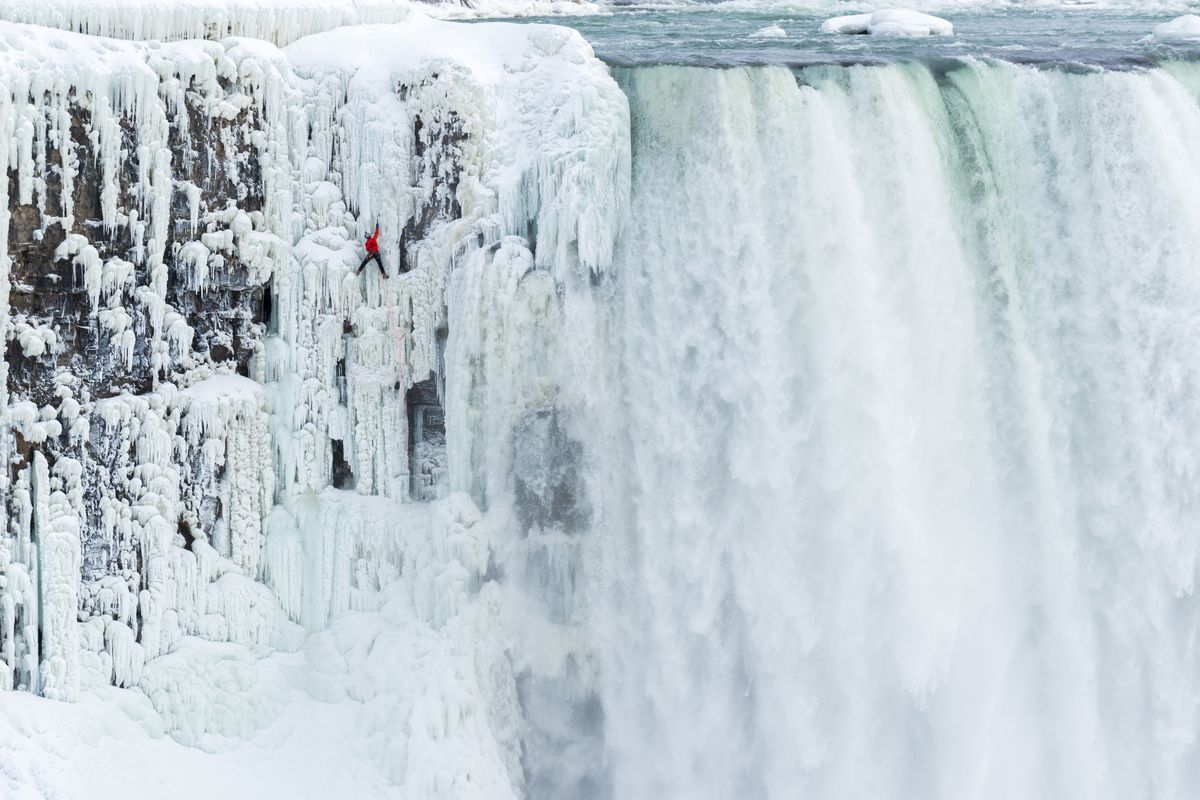Will Gadd ice climbs the first ascent of Niagara Falls
Will Gadd of Alberta, Canada, made the first ascent of Niagara Falls by climbing the frozen sections of Niagara's Horseshoe Falls on Jan. 26, 2015. (Red Bull Content Pool)
Wet and wild might describe the first ice-climbing ascent of Niagara Falls on the U.S.-Canada Border.
As 150,000 tons of water a minute poured over the crest and pounded the earth beside him at speeds of more than 62 mph, Will Gadd of Alberta, Canada, became the first climber to ascend the frozen sections of Niagara’s Horseshoe Falls on Jan. 26.
Gadd, 47, has traveled to the ends of the earth to find the world’s most challenging climbs, but Niagara Falls, one of his home country’s iconic landmarks, was a lifelong mission that he previously thought impossible. Cold weather formed ice this season to give him a shot.
After working with New York State Parks Department and park police, Gadd and his team created a comprehensive plan to ensure the climb could be done safely and the necessary precautions were taken to protect the natural environment.
“It’s one of the most visited places in North America,” Gadd said. “We have to treat it as a jewel, or it won’t work.”
Only natural protection was used in the climb. Nothing was left in the ice, he said.
The line – which sits on the American side of the Horseshoe section of Niagara, near what’s known as Terrapin Point – is about 147 feet from bottom to top.
He said Niagara’s ice is trickier than some of the fabled climbs he made in Alberta.
“The ice is formed in layers,” Gadd said. “That means there’s a layer of ice, then snow (with a lot of air), then another layer of ice. It’s unstable, for sure.”
He graded the climb at WI6+, as hard as it gets for this style of climbing.
Tools he used included ice axes, crampons and a specially designed Black Diamond prototype “ice hook.”
The day before the climb, Gadd dropped in from above to clear the route of dangerous hanging ice that could break off during his climb.
“I was taking off pieces the size of small cars,” he said. “After a full day in front of the route, it was ready.”
After a hairy icy traverse to the base of the falls, he made the first ascent in about one hour of climbing.

